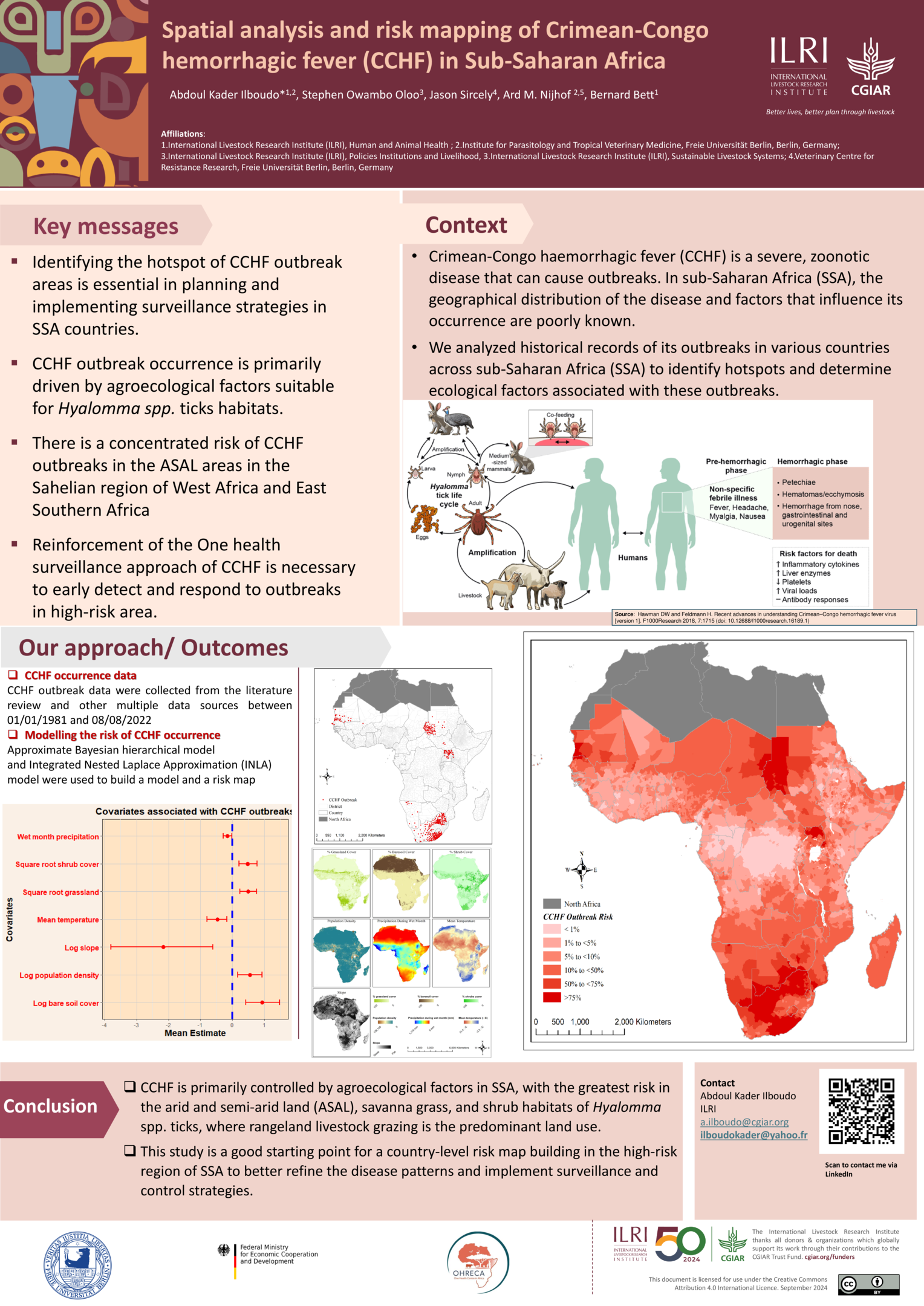
Description
Abstract
Background: Knowledge on factors that influence the geographical distribution of Crimean-Congo hemorrhagic fever (CCHF) in Sub-Saharan Africa (SSA) is poor. Records on historical outbreaks from various countries across SSA can help identify hotspots and factors associated with past CCHF outbreaks to better understand the risk of future outbreaks.
Methods: We compiled data from historical outbreaks that were reported in SSA between 1981 and 2022. A shapefile of the level 2 administrative boundaries in each country was built and merged with geo-climatic, environmental, socioecological data and analysed using an approximate Bayesian hierarchical model using the R-INLA package. The final model generated was used to build a CCHF risk map.
Results:
A total of 54 CCHF outbreaks were compiled across 414 districts in nine SSA countries. A greater proportion of grassland cover, bare soil, shrub and population density, and a lower proportion of slope, mean temperature, and wet month precipitation were the most important contributors to our model. The risk map shows that CCHF occurrence risk was higher in arid and semi-arid land (ASAL) of West Africa Sahelian region, Central Africa, and the Eastern and Southern Africa region.
Conclusion: The analysis identified ecological and demographic factors that are associated with CCHF outbreaks in SSA. This finding suggests the need to improve surveillance for the disease, especially in the high-risk areas for early detection and response, and the collection of more representative occurrence datasets.
Comments
Add new comment